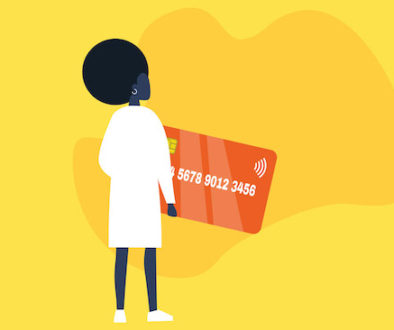Expanding Your Knowledge on Minimizing College Debt Effectively
Attending college is a significant financial undertaking that can impact one’s financial stability for years to come. With rising tuition costs and the looming prospect of student debt, it’s crucial for prospective students and their families to strategize effectively to minimize expenses and manage finances wisely. This comprehensive guide explores various methods to reduce the financial burden of college through smart planning, resource utilization, and proactive financial management.
Maximizing Financial Aid and Scholarships
Understanding and Applying for FAFSA
The Free Application for Federal Student Aid (FAFSA) is essential for any college-bound student. This form determines eligibility for federal loans, grants, and work-study programs. It’s crucial to submit the FAFSA early each academic year to ensure access to the maximum amount of available aid, as some funds are awarded on a first-come, first-served basis.
Expanding Scholarship Searches
Beyond the FAFSA, students should vigorously pursue scholarships and grants. These forms of aid do not require repayment, making them ideal for reducing overall college costs. Students should apply for scholarships from a variety of sources, including local community organizations, non-profits, and corporations. Continuous application throughout college can reveal additional funding opportunities.
Cost-Effective College Choices
Benefits of Community College
Beginning at a community college can significantly reduce educational expenses. These institutions offer lower tuition rates and allow students to complete prerequisite courses before transferring to a four-year university, thus cutting down on the total cost of obtaining a degree.
Choosing the Right College
The decision between attending a public or a private university can significantly impact educational costs. While state schools may offer lower tuition rates for residents, some private colleges might provide generous financial aid packages that could make them equally affordable. Analyzing the net price after all scholarships and grants is crucial.
Strategic Borrowing
Understanding Loan Types
It’s important to distinguish between federal and private student loans. Federal loans usually offer lower interest rates and more flexible repayment options, including forgiveness programs and income-driven repayment plans. Private loans should be a last resort due to their less favorable terms.
Borrowing Only What is Necessary
Students should aim to borrow only the amount needed to cover essential educational expenses. This approach helps to minimize debt load after graduation. Creating a detailed budget can aid in understanding exactly what is necessary and what can be cut back.
Reducing Living Expenses
Economical Housing Choices
Housing is one of the largest college expenses. Options such as living at home, finding affordable off-campus housing, or serving as a resident advisor can substantially reduce or eliminate housing costs.
Working While in College
Engaging in part-time work or work-study programs can help offset college costs and reduce the amount borrowed. These opportunities provide financial benefits and can also offer valuable work experience.
Leveraging Tax Benefits
Education Tax Credits
Tax credits, such as the American Opportunity Tax Credit (AOTC) and the Lifetime Learning Credit (LLC), can significantly reduce the amount of tax owed. These credits are more beneficial than deductions as they directly reduce the tax bill rather than just reducing taxable income.
Academic Strategies for Cost Reduction
Accelerated Programs
Participating in accelerated programs can reduce the duration and cost of college education. These programs allow students to complete their degrees faster than traditional timelines, saving on tuition and other fees.
Utilizing Advanced Placement and CLEP
Students can earn college credits at a reduced cost through Advanced Placement (AP) and College Level Examination Program (CLEP) tests. These credits can replace some college courses, reducing the number of credits needed for graduation and the overall cost of education.
Effective Course Planning
Planning an academic path wisely can save money. This includes taking advantage of summer courses, which are often cheaper, and ensuring all classes taken contribute directly towards the degree to avoid unnecessary spending on superfluous courses.
Practical Money Management
Budgeting and Financial Planning
Developing a detailed budget is crucial for financial success in college. Students should track all income and expenses and adjust their spending habits to ensure they can meet their financial goals without accumulating unnecessary debt.
Frugal Living Strategies
Adopting a frugal lifestyle can further reduce college expenses. This includes using student discounts, minimizing dining out, and utilizing free or low-cost entertainment options available on campus or in the community.
Utilizing Community Resources
Accessing Local Scholarships and Grants
Local scholarships are often underutilized resources that can provide significant financial support with less competition than national scholarships. Students should regularly check with their high school counseling offices, local libraries, and community organizations for scholarship listings. Engaging with local business groups and foundations that offer scholarships can also yield fruitful results.
Participating in Community Events
Community events often provide opportunities for networking and learning about less publicized financial aid options. By attending such events, students can connect with local leaders and philanthropists who may offer scholarships or grants that are not widely advertised.
Leveraging Technology and Secondhand Resources
Buy Used or Digital Textbooks
Textbooks can be a significant expense. Purchasing used books, opting for e-books, or renting textbooks can reduce this cost. Websites like Amazon and Chegg offer these options at a fraction of the cost of new textbooks.
Utilize Online Resources
Many educational resources are available for free online. Platforms like Khan Academy, Coursera, or OpenStax offer free courses or textbooks that can supplement your learning and reduce costs associated with buying educational materials.
Financial Aid Counseling
Seeking Guidance from Financial Aid Counselors
Financial aid counselors can provide personalized advice tailored to a student’s specific financial situation. They can help decipher the complexities of student aid, suggest suitable scholarships, and guide students through the application process for various forms of financial assistance.
Regular Consultations
Regular meetings with a financial aid counselor ensure that students are up-to-date with the latest financial aid opportunities and deadlines. These professionals can also assist in appealing for more financial aid if initial offers are insufficient.
Alternative Education Paths
Exploring Online Degree Programs
Online education can be a cost-effective alternative to traditional on-campus programs. These programs often offer lower tuition rates and eliminate the need for transportation and room and board expenses.
Considering Part-Time Study Options
Part-time study allows students to spread the cost of education over a longer period while working and earning. This method can make education expenses more manageable and reduce the need for loans.
Financial Literacy Education
Understanding Personal Finance
Courses on personal finance are crucial for students to manage their money effectively. Understanding budgeting, savings, investments, and debt management can empower students to make informed financial decisions during and after college.
Attending Workshops and Seminars
Many colleges and universities offer free workshops and seminars on financial literacy. These sessions cover topics such as budgeting, saving, and the wise use of credit. They are invaluable resources for students looking to enhance their financial knowledge.
Proactive Debt Management
Early Repayment Strategies
If students accumulate any loans, developing a strategy for early repayment can save significant amounts in interest over time. Even small additional payments towards the principal can reduce the loan tenure and total interest cost.
Loan Forgiveness Programs
Students should investigate loan forgiveness programs that may be available in their field of study, particularly in public service, teaching, or health care. These programs can forgive remaining debt after a set number of years of qualifying employment.
Conclusion
Successfully navigating the financial challenges of college requires a proactive approach, blending smart financial planning with strategic decision-making. By maximizing financial aid opportunities, choosing cost-effective educational paths, and managing living expenses, students can significantly reduce the burden of debt. This holistic strategy not only eases financial stress during college years but also enhances financial freedom after graduation, allowing individuals to focus on career growth and personal achievements without the overbearing weight of student debt. Embracing these strategies ensures that the pursuit of higher education remains an investment in the future, yielding returns that extend far beyond the classroom.



